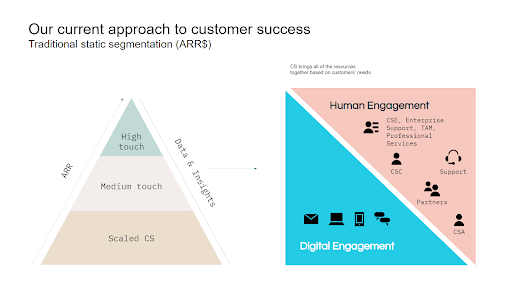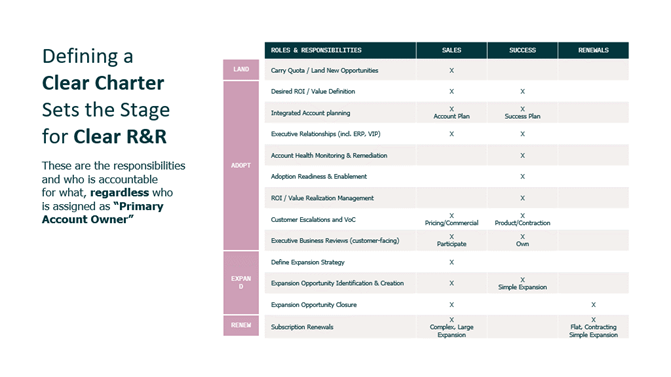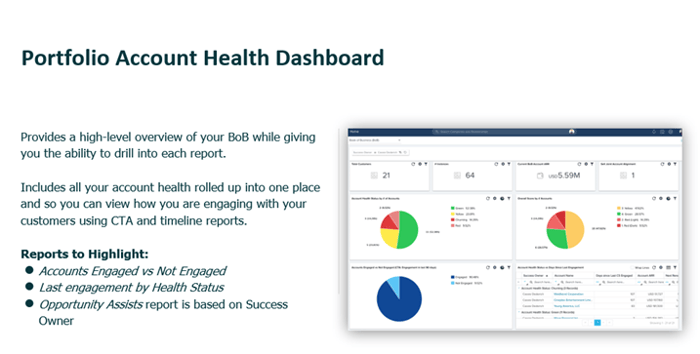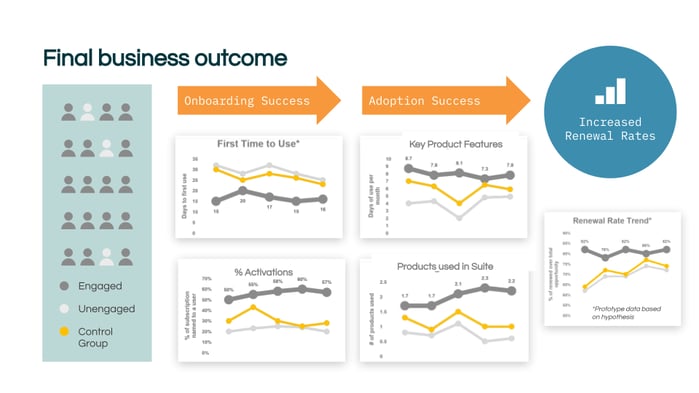Make Every Customer Relationship Digital First
Zendesk’s SVP of Global Customer Success, Renewals and Customer Experience Teresa Anania joins us in this interview to share her expertise and …
Written by

Share this post
Subscribe for best practices on optimizing your software business.
Listen to this article

Zendesk’s SVP of Global Customer Success, Renewals and Customer Experience Teresa Anania joins us in this interview to share her expertise and experience about how the perfect combination of digital and human touch can revolutionize the customer experience.
Prior to joining Zendesk, Teresa worked for 11 years at Autodesk, where she built out their entire digital-touch model, which served 3.1 million subscription customers. Her work was a key enabler of scale for Autodesk.
Here are a few quick facts about Zendesk (NYSE: ZEN):
- Leading customer service help desk software provider
- Annual Revenue: $1 billion
- Customers: > More than 100,000 businesses
- Employees: More than 5,000
- Employs PLG and has a significant base of enterprise customers (Slack, Grubhub, Siemens Financial Services)
Doug: You have a lot of experience in driving digital scale in Customer Success. From your perspective, why must every customer relationship – from the smallest to the largest – be digitalized?
Teresa: I believe that the evolution of Customer Success, especially post-pandemic as we reimagine our organizations, requires scale. There's no way to just keep adding extra costs and headcount linearly while growing the revenue base.
Digital first, to me, has always been logical. Customers often like to self serve. For example, let’s think about an enterprise account of Zendesk with hundreds or even thousands of agents. Those individual agents really love to learn more about how to unlock new capabilities, optimizations, etc. What better way to do that than digitally within the product? Show the agent a curated experience, even through social media or other channels.
At Zendesk, we're now orchestrating a blended digital and human touch, so we're making sure that the digital experience is known to our human representatives in Customer Success, Customer Support and Renewals. They know what digital content customers are consuming, and what they're not. And then they can use that same content to further the conversation. They can help that customer beyond what a digital self-service experience can do. So, I love the combination, and think orchestration is the next frontier.
At Zendesk, we strive to digitalize all relationships to equip customers and the Zendesk team with transparency and actionable insights, and empower customers with self-service experiences where that is beneficial. Smaller and less complex customer accounts may use a high level of self-service automation compared to a larger and more complex customer account.

(Orchestrated mix of digital and human touch in all accounts)
Doug: How do you orchestrate customer-facing activities across Customer Success, Sales and Renewals so you’re all aligned?
Teresa: We try to focus on those critical moments of truth, so it doesn’t become overwhelming when you think about all the digital and human engagements of various departments with customers across the entire lifecycle. Let's break it down.
Onboarding
How do we leverage both digital and human touch in that onboarding experience? And then how do we know when either one or both combined have achieved success in helping the customer onboard, in other words get “fast time to value”?
That for us, is the outcome of a very successful onboarding experience. This should be done for all touchpoints along the customer lifecycle. We do pragmatic customer journey mapping by just having cross-org workshops with a whiteboard, to design out an intentional and coordinated touchpoint plan. What does that customer experience look like from the customer's lens? And what roles do each of the players, digital and human, play in that experience?
Automation
We're leveraging Gainsight tightly integrated with Zendesk and Salesforce.com. For example, we're now able to take data out of our Eloqua marketing automation tool to inform our human Customer Success Managers (CSMs) what automated communications have gone out to the customer, so they know what's happened with that customer.
Information is contextualized, it's relevant, and it makes better use of the specific customer journey, not just for digital touch, but to allow the human CSM engagement to follow the same plan to take the customer along the journey of getting the full value of our solutions and advancing along the CX maturity curve to achieve ever-greater ROI. It takes orchestration – but don't overthink it. It can be done pragmatically as well as through some automation.

(Swim lanes for Sales, Customer Success and Renewals)
Doug: What are some of the biggest hurdles today facing Customer Success teams?
Teresa: One of the biggest challenges is agreeing on the critical data and insights that matter. For example, what does a successful onboarding experience look like for a customer? Maybe it's different for an enterprise and a SMB account. And then, what does successful adoption look like?
As you can imagine, Product, Marketing and Customer Success teams all have different views. Align on those critical outcomes and how you are going to measure success, because that's the start of knowing how you're tracking against that customer journey.
The second is removing some of the friction points between Customer Success, Renewals and Sales. The partnership of these groups in serving the customer is essential. How many of us, even as customers, really hate it when you feel like you're in a conversation with the same company, but having it all over again from one person to another? It can be really challenging for all the departments touching a customer account to line up their swim lanes. Often points of friction emerge when multiple departments must work in concert with overlapping responsibilities where someone's in the lead, but others need to support across the customer lifecycle. Lay out roles and responsibilities aligned with your top sales partners and your top renewal partners. Practice it and work through the “in-the-trenches” problems that come up, and then refine it.
Doug: Customer Success leaders talk about continually having to push back against other departments’ desire to use them as a dumping ground for random problems they want to cast off. Why is that?
Teresa: I think even in mature organizations, anything that isn't about landing a new account or directly related to an expansion opportunity gets dumped on the Customer Success Team. Sales doesn't want to waste time on anything that isn't linked to their number. The Renewals team wants to focus on the commercials. Support is more like a break fix, so it just feels like everything else falls upon Customer Success.
But if you put a stake in the ground, and you create a more proactive, preventative approach, by surfacing pragmatic utilization/adoption data could signal the customer might be off track and not getting the full value of your solutions. Then you still need fast track escalation points because the data/insights will never be perfect. These proactive and reactive engagement methods can be aggregated in a CS Playbook so you can really scale your CSM engagement for high-, medium- and low touch levels.
We are becoming more proactive to try to prevent the need for so much reactive swarming and product escalation. First, we streamlined the escalation process, so the Customer Success team was not chasing down things that were broken in other departments. Second, the team devotes more time to proactively engage with customers. This has been seen, even by Sales, as a new brand of our Customer Success organization, driving a true impact. And that's a perfect segue into how we’ve evolved to a shared model of customer ownership. There is not one owner of the customer, but each of us has our part.
You can develop Customer Success into the platform on which Sales can expand and cross-sell and upsell. The Sales team loves it because we're often the actual lead generation vehicle for their expansion opportunities.
The Renewals team appreciates that the work we're doing makes their jobs easier. It gets them out of that price-only discussion. Customer Success finally is starting to feel like we are owning a number. We own the churn and contraction number of our entire book of business, which is a huge responsibility. But it's also very negative thinking, right? It's all centered on how much are we losing and can we mitigate and lose less? This is important but it's only part of the story.
I've also added Expansion bookings (in addition to churn and contraction, so collectively Net Expansion Rate) to compensation plans and measurement metrics. It shows the impact Customer Success has on expansion. When you start measuring NER, it really shows the team how their work drives lifetime customer value.
Doug: How do you use customer scorecards, KPIs or dashboards in your work?
Teresa: It is important to measure the impact of Customer Success and Renewals and have it be "always on". Even in my Renewals organization, it’s still essential to be able to attribute their involvement in the outcome of renewal negotiations with expansion potential.
So, I start at the customer level with a health dashboard. You probably hear from a lot of data science-focused people about predictive scoring and early warning systems, and I'm all for these. But I also believe that it must be grounded in some heuristic data and enable a human override to be able to triangulate the true health of the account.
What we've done in our Gainsight account Health Scorecard is combine the analytics data with heuristic and human override data. There is a churn contraction or retention type predictive score. There's also a heuristic score, which is based on pure usage data that I bet all of you have or know, like what does success look like in utilization?
For example, I can tell you if an account purchases our platform for 75 agent seats and by day 45 are only using 30 of them, that may be an indication the customer is not off to a good start. So, this is basic, important data to determine how much use they’re getting out of their entitlements. That's what I call heuristic.
Human override data is sentiment. For example, I just had a meeting with a customer and learned that the new head of CX came from one of my competitors and therefore will have a bias. And now, our platform in their CX stack might be at risk. How would my data and insights ever know that?
All of this information bubbles up into a portfolio account health dashboard, where our teams can see the health of accounts at multiple levels and segment data in a multitude of ways.

(Portfolio Account Health Dashboard)
Doug: How do you use customer insights to help orchestrate activities of various teams touching an account?
Teresa: An example of orchestration is using customer data and insights to drive a digital experience when an account or user looks unhealthy. Digital content to get them on track should be no different than the same triggers that you're using for human engagement and outreach. Customer Success Managers (CSMs) can use data and insights about the health of that account to make their conversations with customers richer.
So, the need for data and insights is the same for digital and human touch. And it just allows humans to have a more meaningful conversation. That's how we use account health data to design those outreach moments. The playbooks that we built for Customer Success and Renewals all feed off this.
For example, if certain data suggests the account is not successfully onboarded after 45 days, what's the play we're going to drive? Same with expansion plays…This account looks super healthy. They're consuming all their entitlements. We know the products they’ve purchased. So how can we help move the customer along the maturity curve to unlock other/new capabilities to maximize the value/ROI they receive from our solutions. Our plan may be to recommend a product they don’t have, which could result in an upsell or cross sell.
Doug: How do you find the balance between striving for perfect statistical account data and making judgement calls based on your “gut” instincts?
Teresa: I love data science, but you cannot wait on a perfect data science model to predict churn and contraction. If there are patterns that indicate when a customer is likely to contract or churn that you can identify at 120 days, that's beautiful. And you must take those things and prevent them through your digital touch and your outreach through human engagement. That's your playbook right there.
 (Using metrics to measure progress against business outcome targets)
(Using metrics to measure progress against business outcome targets)
Doug: What’s an example of a playbook your Customer Success or Renewals team might use?
Teresa: In customer onboarding, for example, your data and insight might indicate the customer has not seen fast “time to value” yet. Your playbook could share the customer’s utilization (their activations) thus far, and then the play includes some good content and conversation starters to help them with a successful deployment. So how do we support self-help? There are content links in that playbook. The outcome is getting, let's say, 75% of their agents activated. So, you always want to have a playbook: the insights of the input, what's driving the call to action, and that activity you're going to do with the customer (guided help, self-help, call with support, etc.) and then the outcome of the play.
Doug: Why do you believe the whole charter around Customer Success must be completely redone?
Teresa: I think we must recognize what we've learned about the real drivers for growth in SaaS businesses. Relationship building is important, but not sufficient, nor is it measurable. Retention is important, but not sufficient.
We need to start with customer outcomes (such as ROI goals) and how Customer Success delivers on that from day one. Measuring that impact will earn you credibility in the C-suite. Then, understanding and measuring the "means to the ends" or the levers that are most important in delivering on that value helps the customer see the impact that Customer Success is having on their desired business outcome (retention to start).
If you are truly delivering value to the customer and have those executive relationships (AKA trusted advisor status), the next evolution is ensuring the customer has all the capabilities they need to achieve the highest ROI possible and that opens the door to expansion as you help them move along the maturity curve to unlock the full potential of your solution. Then you should be able to correlate Customer Success engagement to Net Expansion Rate (NER) and Remaining Performance Obligation (RPO) - these are the real metrics great SaaS companies care about.
About Teresa
Teresa Anania is SVP of Global Customer Success, Renewals and Customer Experience at Zendesk, where she is responsible for the management and development of the company's global client base, including all customer segments. Her remit is to ensure Zendesk's customers are realizing maximum business value across the customer lifecycle and achieving their ROI goals, which ensures their renewal and opportunity for expansion. Prior to Zendesk, Teresa was the Senior Director of Customer Success at Autodesk where she built from the ground up the scale and tech-touch practice across all market segments. Teresa is passionate about developing personalized, outcome-driven experiences that advance customer adoption, retention, loyalty, and lifetime value. Find Teresa on LinkedIn.


